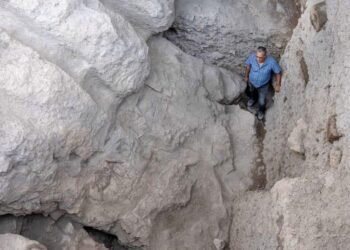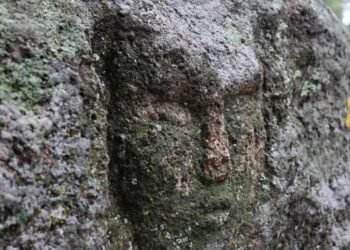Stonehenge is one of the most iconic and mysterious archaeological sites in the world. The site is located in Wiltshire, England, about 8 miles (13 kilometers) north of Salisbury.

This ancient monument consists of a circle of towering stones, some weighing up to 25 tons, arranged in a circular pattern. The monument is surrounded by a circular earthwork and a ditch, creating a unique and enigmatic landscape.

Etymology
The word “Stonehenge” is believed to have originated from two separate words: “stone” and “henge.” “Stone” refers to the large, standing stones that make up the monument, while “henge” is derived from the Old English word “hengen” or “henge,” meaning a circular, enclosed space. So, when combined, the name Stonehenge roughly translates to “the hanging stones in a circular enclosure.”
The name Stonehenge is a relatively modern term and was not used by the ancient people who built the monument. The original purpose and name of the monument remain uncertain, as there are no surviving written records from the time of its construction. The name Stonehenge emerged in the Middle Ages and has since become widely recognized and associated with the site.

The exact purpose of Stonehenge has been the subject of much speculation and debate among archaeologists, historians, and enthusiasts for centuries. It is believed to have been constructed in multiple phases between 3000 BCE and 2000 BCE, making it over 4,000 years old. The stones used in its construction are thought to have been brought from as far as 150 miles (240 kilometers) away, which is a remarkable feat considering the technology available at the time.
Related: Stonehenge Virtual Tour
Astronomical alignments
Stonehenge has captivated the imagination of people for generations due to its astronomical alignments and mysterious purpose. One of its most famous features is the alignment of the stones with the rising and setting of the sun during the summer and winter solstices. This suggests that Stonehenge was used as an ancient astronomical observatory or a sacred site with religious or ceremonial significance.

The monument also serves as a testament to the engineering skills of the people who built it. The precise positioning of the stones and their interlocking joints demonstrate a remarkable understanding of geometry and construction techniques. The fact that the stones have withstood the test of time is a testament to the craftsmanship and planning that went into their creation.
It has been designated as a UNESCO World Heritage site and attracts millions of visitors from around the world each year.
Although many mysteries surrounding Stonehenge remain, ongoing research and excavations continue to shed light on its purpose and significance.
































